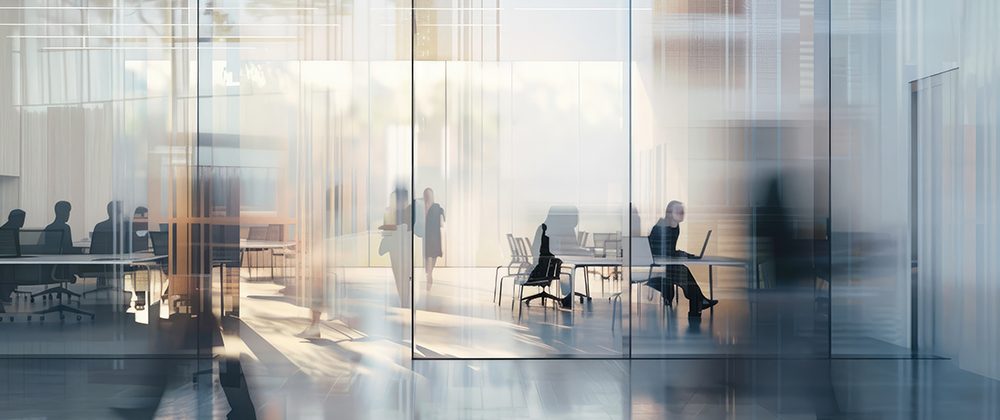As organisations navigate the dynamics of ever-changing employee preferences and organisational needs, architects, interior designers and build-out construction firms have a new tool to help optimise workspaces: Data. Kanav Dhir, VP of Product, VergeSense, looks at a new quarterly report that uses data to define trends impacting design for workplaces.

The quarterly Occupancy Intelligence Index (OII) pulls trends and insights from data captured anonymously by occupancy sensors in thousands of offices and buildings across multiple industries. However, data alone can’t tell the full story but with a little analysis, we were able to draw out usable takeaways that you can apply to client workspaces as well as your own office utilisation.
We all know there’s been a significant shift in working style over the last few years—and that those changes are impacting the importance of aesthetics and the functional allocation of space. How can we respond to today’s pain points? What’s the best approach for a client worried about the inefficiency of two people taking video calls in an eight-person conference room? What should be done about empty desks and offices? Are new buildings using old assumptions about the employees who will one day work there?
The answers to our most pressing questions — as we advise customers and consider our own workspaces — may very well lie in the data. The OII offers an objective benchmark for good architectural and design decisions. For example, a consulting firm reported running out of meeting spaces. OII data suggests the rooms may be reserved but go unused, with ghosted meetings accounting for 37% of all meetings worldwide. The solution might not be to build more meeting rooms but to create a policy that automatically releases unused spaces.
Many organisations are questioning their space mix in an effort to balance comfort and efficiency. The trends revealed in the OII’s third edition can be used by practitioners to guide workplace decisions and support workplace improvements.
Insight: Collaboration is on the rise
Collaboration spaces were found to have an active time usage of 20.6% compared to desks with an active time usage of 8.4%. We know that desks often serve as a home base for employees to keep their belongings and return to between meetings, but the data shows this is not where they spend their time. For designers looking for space to repurpose, desk areas could be transformed into team neighbourhoods, flexible collaboration spaces and private spaces for video calls.
Insight: The space mix has shifted
OII data shows that in the last year, there’s been an increase in Open Collaboration Space (7.5%, up from 6.7% in Q1) and a decrease in Desks (70.9% compared to 72.1% in Q1), which are often used for more focus-oriented tasks. The trend suggests this pattern will continue, with office design catching up to client requests for spaces that fulfil employee requests and preferences.
Insight: Space is still being underutilised
The OII indicates that despite many meeting rooms having the capacity for seven or more people, they average only 1.93 people per meeting. This inefficiency offers an opportunity to repurpose multiple larger conference rooms. Designers might consider smaller spaces where employees can work solo with home-office-type space and amenities or in small groups.
Insight: Our industry’s workspace is changing too
Anecdotally, we’ve heard that architecture and construction office spaces are changing with the times. In a recent AIA article on return-to-office policies, firms described going fully virtual or massively downsizing footprints and renovating to have fewer workstations and more communal spaces. However, OII data suggests the shift is not happening fast.
OII data looked at Q4 of 2023 for architecture and construction firms and all industries. While the other sectors showed up to a 3% increase in capacity usage (a space’s person count divided by the space’s capacity) and up to a 5%increase in active time usage (minutes used divided by total minutes in a workday), the trend was less pronounced for design firms, with some showing no change at all.
For companies poised to implement innovative solutions to workspace problems, this trend might reflect the industry putting client needs before our own office improvements. Or it could be that we’ll see bigger changes in space allocation and usage over time as existing leases come up for renewal and firms renovate or relocate.
On trend or just getting started?
Like other industries, architecture, design and construction firms are moving towards a more metrics-oriented model, where business decisions require hard data instead of hypotheses. Using analysis from the OII and other sources allows for observation of trends over time while anticipating the needs of clients and recommending designs that better address current office attendance and employee needs.
With workspace leases averaging three years, we are quickly approaching a critical point: it’s been about three years since the ‘return’ following the pandemic. We’ll watch the data into 2025, but there are early indications that the changes we are seeing are just the beginning of a workspace transformation trend that could have offices looking—and operating—very differently. Your clients will surely look for guidance on their space.
The next Occupancy Intelligence Index will be released in August of 2024.




